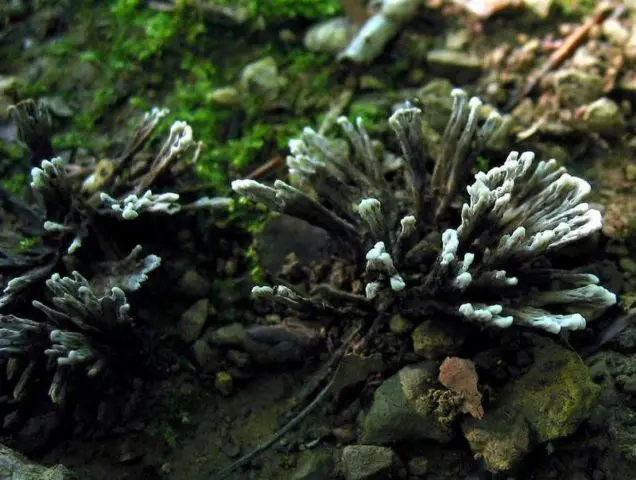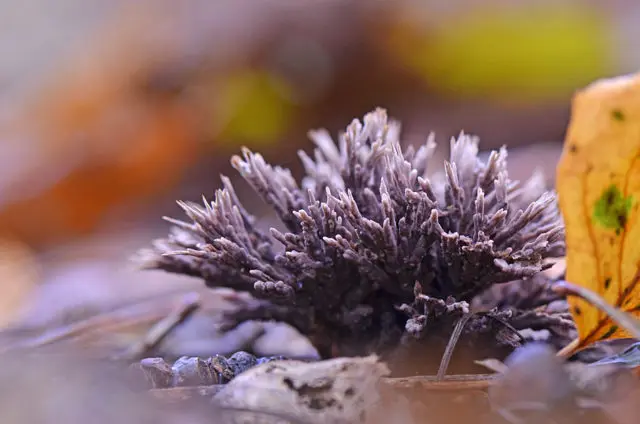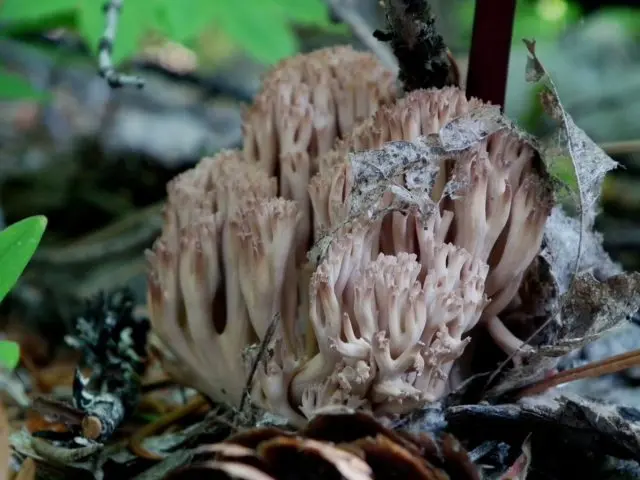Contents
Thelephora palmata, also known as the palmate telephora, is a coral mushroom belonging to the Thelephoraceae family of the same name. It is considered quite common, but it is difficult to notice this mushroom, as it has an unusual appearance that blends well with the environment.
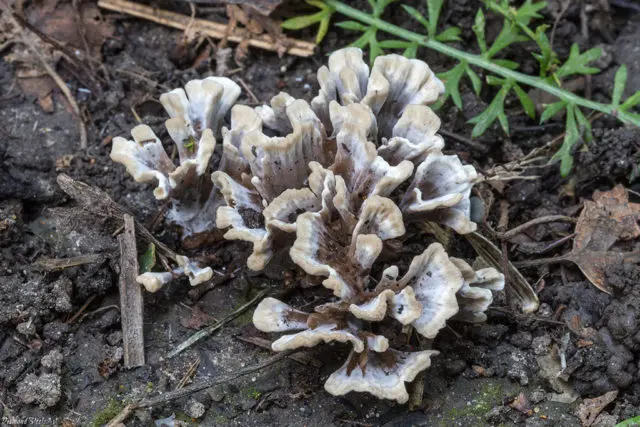
Some facts from history
In 1772, the fingered naturalist from Italy, Giovanni Antonio Scopoli, first made a detailed description of the telephora. In his work, he named this mushroom Clavaria palmata. But after almost 50 years, in 1821, mycologist (botanist) Elias Fries from Sweden transferred him to the genus Telephora. The fungus itself has received many names over the entire period of research, since it has been assigned to different families several times (Ramaria, Merisma and Phylacteria). Also in many English-language sources there are names associated with an unpleasant smell, for example, “fetid false coral” which means “stinky fake coral”, or “stinking earthfan” – “stinking fan”. Even Samuel Frederick Gray, in his 1821 work entitled The Natural Arrangement of British Plants, described the telephora digitata as “stinking branch-ear”.
According to Mordechai Cubitt Cook, a mycologist (botanist) from England, who told in 1888 that one day one of the scientists decided to take several copies of the digital telephora for research. But the smell of these samples was so unbearable that he had to wrap the samples in 12 layers of paper to stop the stench.
Numerous modern sources also indicate that the digital telephora has a rather unpleasant pungent odor, however, from the description it becomes clear that it is not as fetid as Cook told about it.
What does a telephora look like?
Telephora palmate in its shape resembles a bush. The fruit body is coral-like, branched, where the branches are closer at the base, narrowed, and upwards – expanding like a fan, divided into numerous flattened teeth.
Twigs of a brown hue, often located, flattened, covered with longitudinal grooves. Often with a light border. The young mushroom has whitish, slightly pink or cream branches, but with growth they become darker, almost gray, and at maturity they are completely lilac-brown.
In length, the fruiting body is from 3 to 8 cm, located on a small stem, which reaches approximately 15-20 mm in length and 2-5 mm in width. The surface of the leg is uneven, often warty.
The pulp is fibrous, tough, brown on the cut, has an unpleasant smell of rotten cabbage, which becomes stronger after the pulp dries. The spores are irregularly angular, purple, with microscopic spines. Spore powder – from brown to brown.
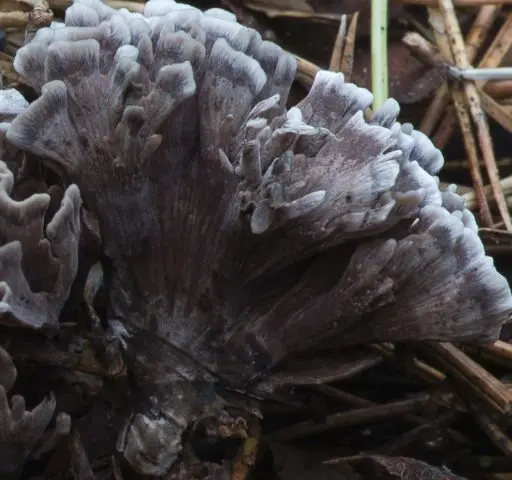
Is the mushroom edible or not?
Telephora palmate belongs to a number of inedible. It is not poisonous.
Where and how to grow
Telephora digitata is found in:
- Europe;
- Asia;
- North and South America.
It has also been recorded in Australia and Fiji. In Our Country, it is more common in:
- Novosibirsk region;
- Republic of Altai;
- in the forest zones of Western Siberia.
Fruiting bodies are formed from July to October. Prefers to grow in moist soils, near forest roads. Grows in coniferous, mixed forests and grassy fields. Forms mycorrhiza with coniferous trees (different types of pine). Often grow together with legs at the base, forming a tight bundle.
Twins and their differences
Among the mushrooms similar in appearance to the telephora digitata, it is worth noting the following types:
- Thelephora anthocephala – is also an inedible member of the family, and is distinguished by branches tapering upwards, as well as the absence of a specific unpleasant odor;

- Thelephora penicillata – refers to inedible species, smaller spores and changeable color are a distinguishing feature;

- many types of ramaria – are considered conditionally edible or inedible mushrooms, differ in color, more rounded branches of the fruiting body and lack of smell.

Conclusion
Telephora digitata is an interesting species. Unlike many other mushrooms, it can have the most diverse form of fruiting bodies. Similar to corals, but emitting an unpleasant pungent odor, these mushrooms are simply impossible to confuse with others.










